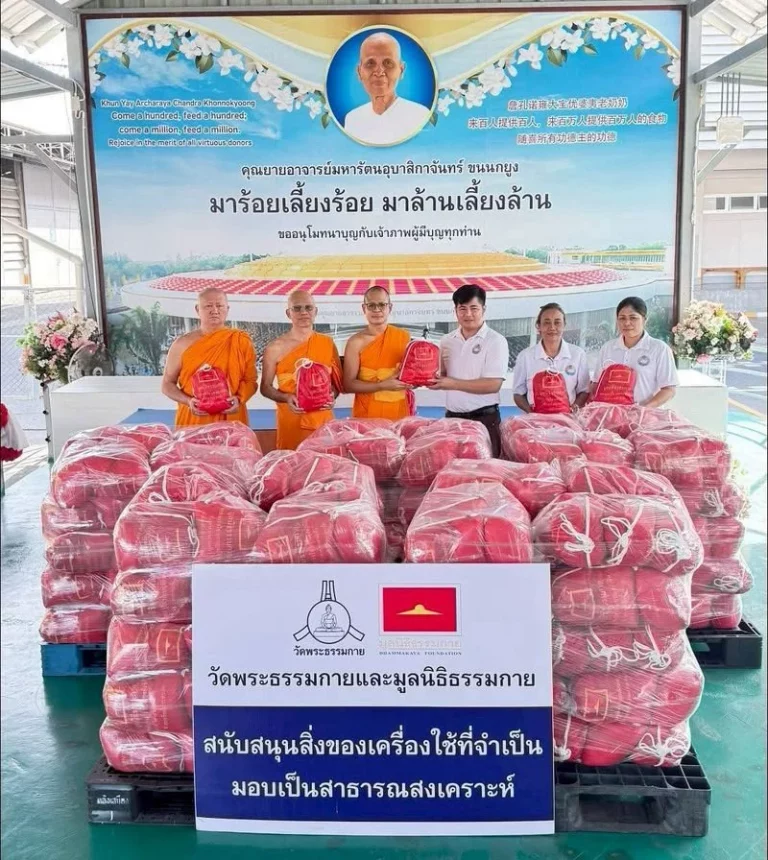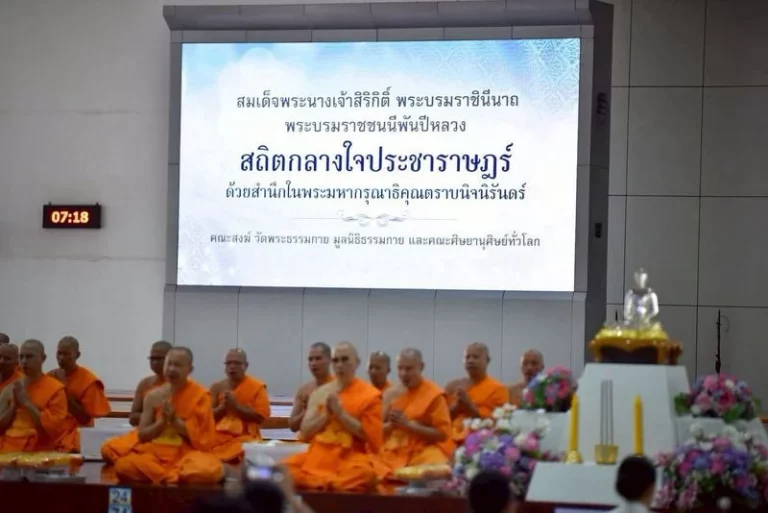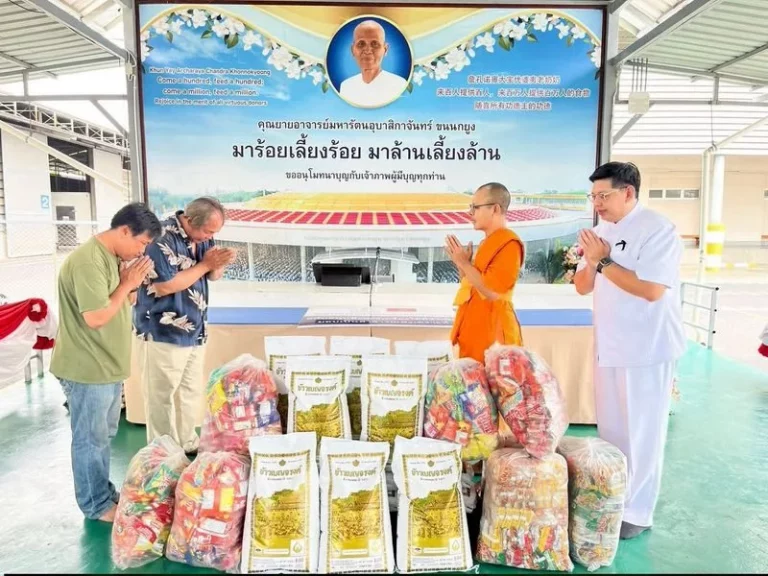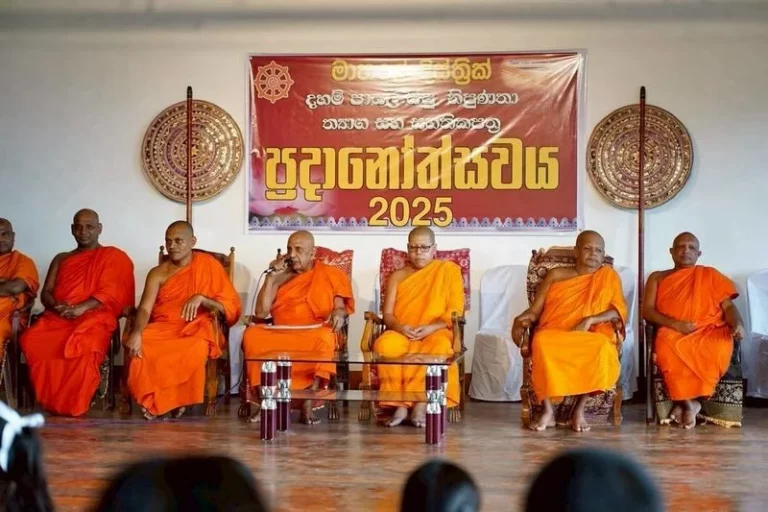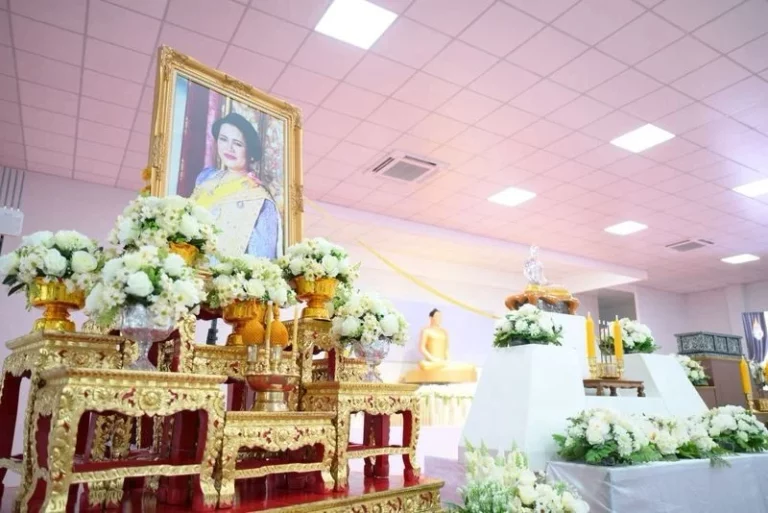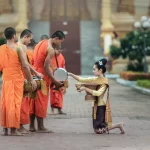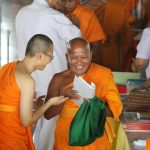You’re kindly invited to join the ceremony to cast the miniature cetiya that will enshrine the relics of Khun Yai Tongsuk.
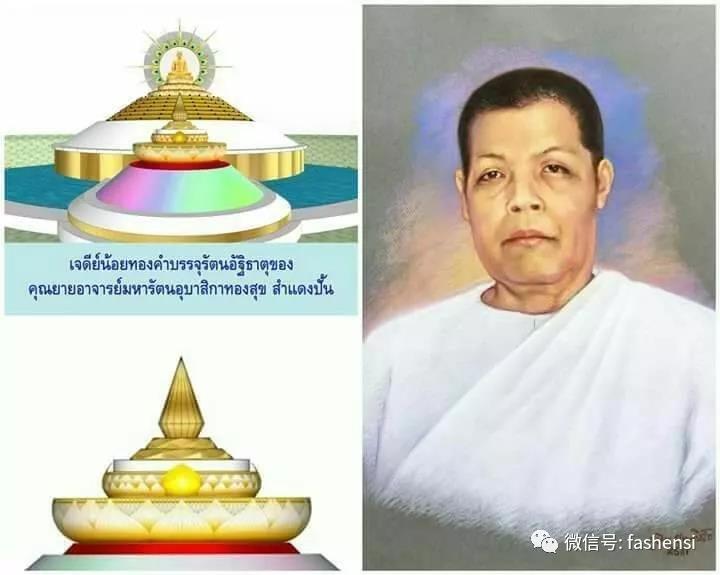
Biography of Khun Yai Tongsuk Samdaengpun
Khun Yai Tongsuk Samdaengpun, a renowned meditation teacher, was born on Wednesday, August 1st, 1900 (Year of the Rat) in Baan Saphan Lueng, Bangrak–a thriving district in Bangkok Metropolitan. She was the third child to father Rom and mother Wan.
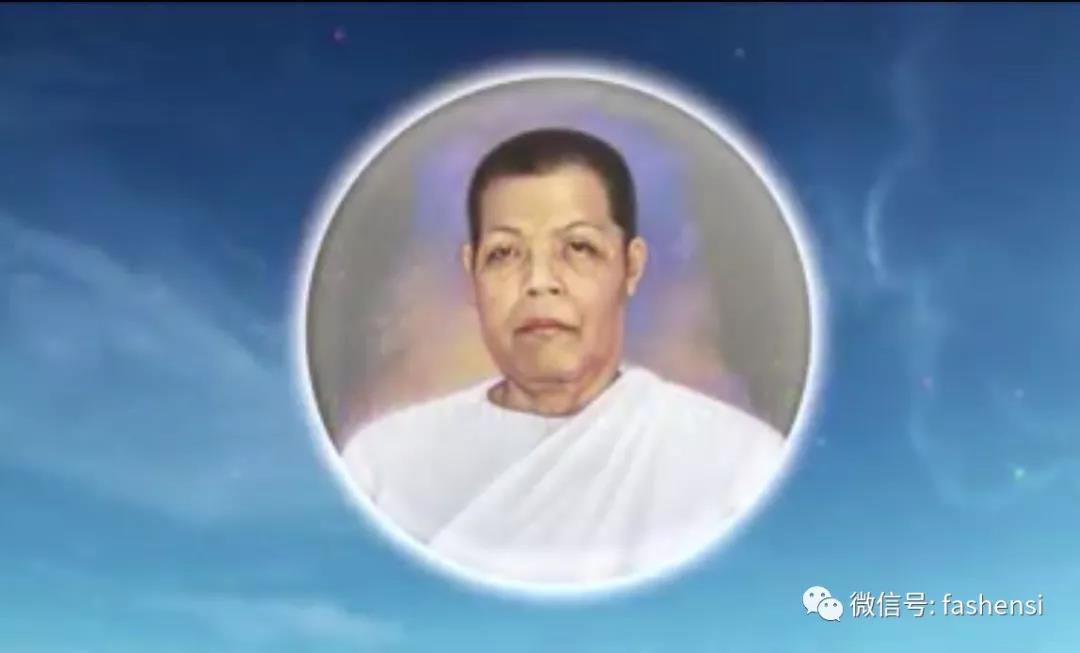
She lost both of her parents at a very young age and was under the care of her uncles and aunts. Later on she married Dr. Chuen Samdaengpun, a surgeon at King Chulalongkorn Memorial Hospital, with whom she had two children. Shortly after, her husband passed away, but she was able to comfortably provide for her children by working as a merchant.
At the age of 30, she began to explore about meditation and the Dhammakaya Knowledge with the Great Master Phramongkolthepmuni at Wat Paknam Bhasicharoen. He taught her to rest her mind firmly at the center of the body by repeating the mantra “Samma Arahang” at all times, whether she was walking, standing, sitting, or sleeping.
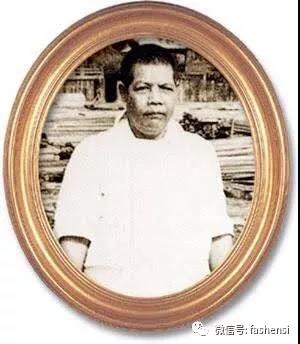
She attained Dhammakaya at the age of 35 and ordained as a nun at Wat Paknam when she turned 40 due to her deep faith in Buddhism and the Great Master. Once her knowledge was proficient, the Great Master delegated her to disseminate the Dhamma and teach meditation. Khun Yai Tongsuk was a superb teacher who possessed meticulous teaching skills. She practiced and reviewed her Dhamma knowledge continuously. She dedicated all her effort for her students, so that they will truly know, remember, understand, and eventually succeed in their practice. She earned the confidence of the Great Master, who had entrusted her the role of teacher.
Khun Yai Tongsuk was a very skilled teacher who could address any questions clearly and provide relevant advices to overcome obstacles with great compassion. One of her advices was: “Do not make the body tense. Do not squeeze your eyeballs. Visualize a mental object and repeat the mantra continuously while keeping your mind at the center of your body– merely acknowledge that this is the center of your body. Do not rush. Be still and indifferent. Remove all desires to see something quickly. Remove all worries. Do not feel disappointed if you do not see anything. Just do it correctly and diligently. Dhamma is real. It will appear when the time is right. When you do see it, do not become overly excited or else it will disappear.”

While teaching, she would arrange her material, the cause and effect, and degree of difficulty appropriate for each student. She would also give analogies so that her teachings was clearer. For example, “Our mind is delicate not coarse. Even when our mind is not wandering, it is still difficult to force it to be still immediately. We have to adjust our mind slowly and gently, and it would come to a standstill on its own. Imagine if we were going to corral some chickens. If we were to run and chase after them, they would run away and we would not be able to catch any. However, if we slowly approached them or called them, they would become docile and allow us to handle them easily. Similarly, if we were to use force with our mind, it will not be still. Be gentle and repeat the mantra silently to yourself while softly visualizing an object. Your mind will eventually come to a standstill at the base of the mind, at the center of our body.”
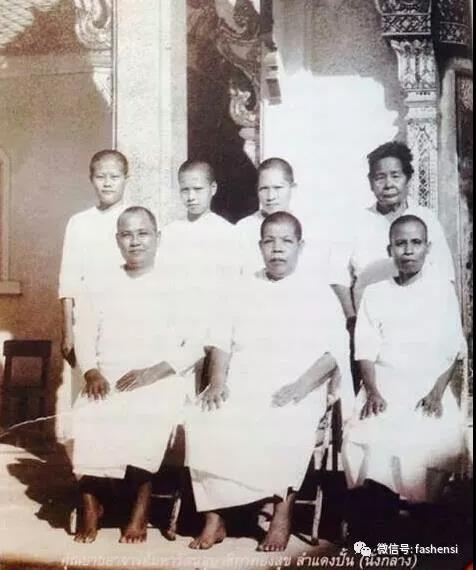
Khun Yai Tongsuk, together with Nun Tien Teerasawad, travelled throughout Thailand to teach the Dhammakaya Meditation method as directed the Great Master. They spent various lengths of time at different places that included Wat Paknam, Bangpakong, Chachoengsao, Chonburi, Pitsanulok, Singhburi, and Chiangmai to name a few.
She had a great number of students–thousands of which attained Dhammakaya.
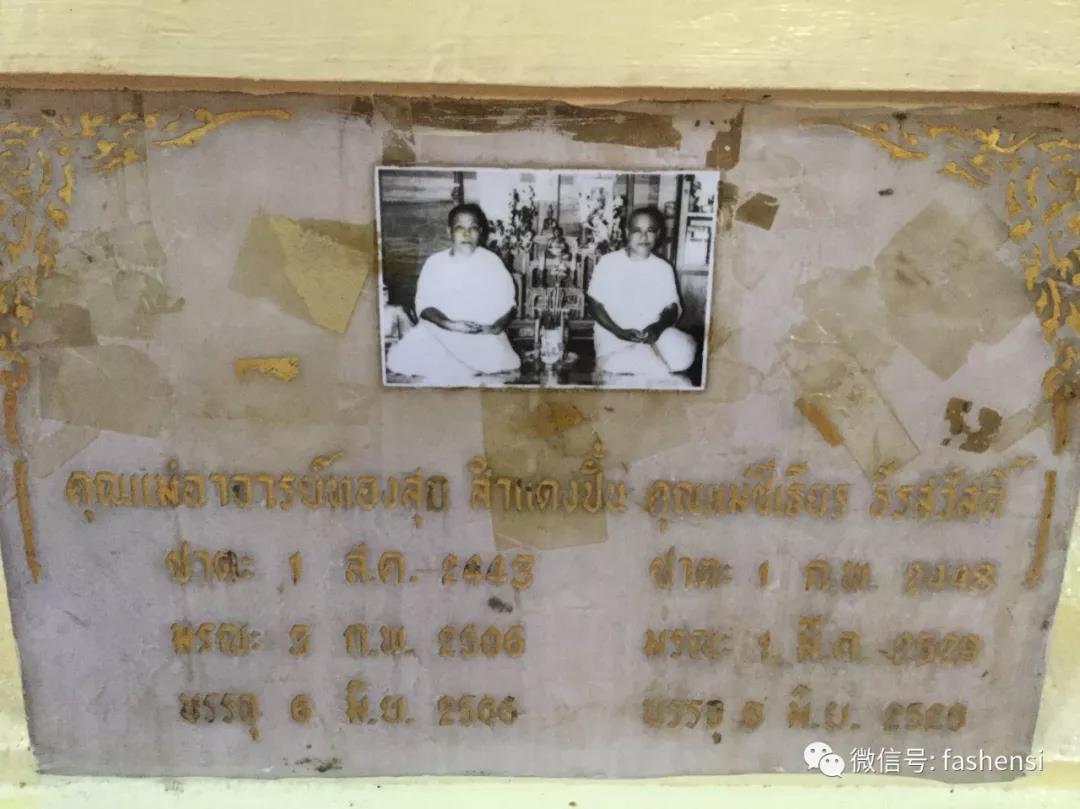
At 19.35 hrs. on February 3rd, 1963, she passed away peacefully at the age of 63 in her residence at Wat Paknam, surrounded by her family and students. She had dedicated 23 years to being a nun.


